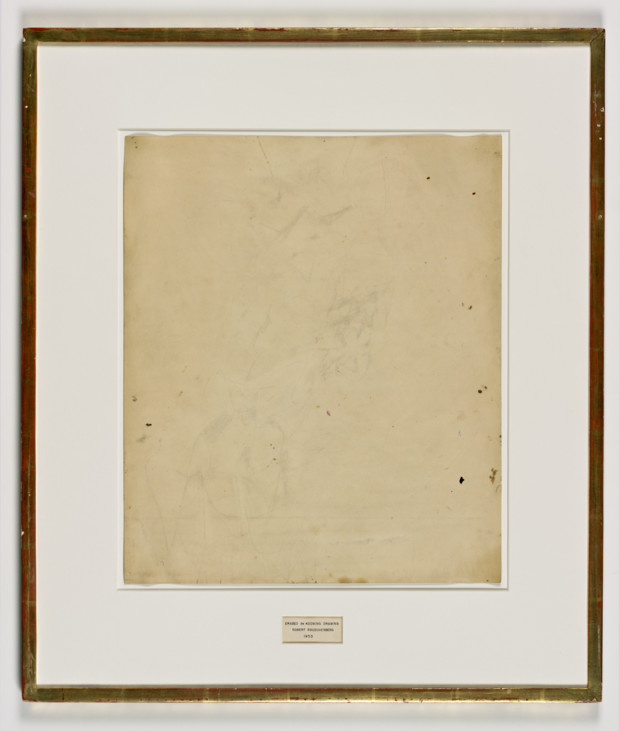robert rauschenberg erased de kooning drawing (1953)
Artist
The Story How Robert Rauschenberg "Erased de Kooning"
1 August 2017 min Read
Robert Rauschenberg was fascinated by Willem de Kooning, and in 1953 asked the artist if he could erase one of his drawings as an act of art. The work that was created then has become a legend. The genesis of the project is well-documented: Rauschenberg went over to the master's studio and said he'd like to erase one of his drawings as an act of art. It was suppose to be something neo-dada. Inspired by Marcel Duchamp, from 1951 to 1953, Rauschenberg made a number of artworks that explore the limits and very definition of art. De Kooning, surprised but intrigued, had three groups of drawings. He wasn't satisfied with the first - so it wouldn't work here. The next was of drawings he liked, but which were all in pencil – too easy to erase. He looked in his third group and found a multimedia work on paper that would be quite difficult to eradicate. It apparently took Rauschenberg one month to get the sheet relatively clear of marks. No photograph exists of the work he erased; but we can look at the final piece which is now owned by SFMOMA. [caption id="attachment_5829" align="aligncenter" width="620"] Robert Rauschenberg, Erased de Kooning Drawing, 1953; traces of drawing media on paper with label and gilded frame, 25 1/4 in. x 21 3/4 in. x 1/2 in. (64.14 cm x 55.25 cm x 1.27 cm); Collection SFMOMA, Purchase through a gift of Phyllis C. Wattis; © Robert Rauschenberg Foundation[/caption] On this video Robert Rauschenberg describes the story and process behind "Erased de Kooning" (1953):
Robert Rauschenberg, Erased de Kooning Drawing, 1953; traces of drawing media on paper with label and gilded frame, 25 1/4 in. x 21 3/4 in. x 1/2 in. (64.14 cm x 55.25 cm x 1.27 cm); Collection SFMOMA, Purchase through a gift of Phyllis C. Wattis; © Robert Rauschenberg Foundation[/caption] On this video Robert Rauschenberg describes the story and process behind "Erased de Kooning" (1953):
Rauschenberg's Erased de Kooning Drawing has been hailed as a landmark of postmodernism because of its subversive appropriation of another artist's work, and it has also been understood as a rejection of the traditional practice of drawing as the foundation of painting. It was also a a literal act of iconoclasm - so typical for our times now.
We love art history and writing about it. Your support helps us to sustain DailyArt Magazine and keep it running.
DailyArt Magazine needs your support. Every contribution, however big or small, is very valuable for our future. Thanks to it, we will be able to sustain and grow the Magazine. Thank you for your help!
- $5
- $10
- $25
- $50
- Monthly
Never miss DailyArt Magazine's stories. Sign up and get your dose of art history delivered straight to your inbox!
We use cookies to provide website functionality, to analyze traffic on our DailyArt Sites, personalize... more content, serve targeted advertisements and to enable social media functionality. Our Cookie Statement provides more information and explains how to update your cookie settings. View our Cookie Statement.
robert rauschenberg erased de kooning drawing (1953)
Source: https://www.dailyartmagazine.com/story-robert-rauschenberg-erased-de-kooning/
Posted by: tranwastookey.blogspot.com

0 Response to "robert rauschenberg erased de kooning drawing (1953)"
Post a Comment